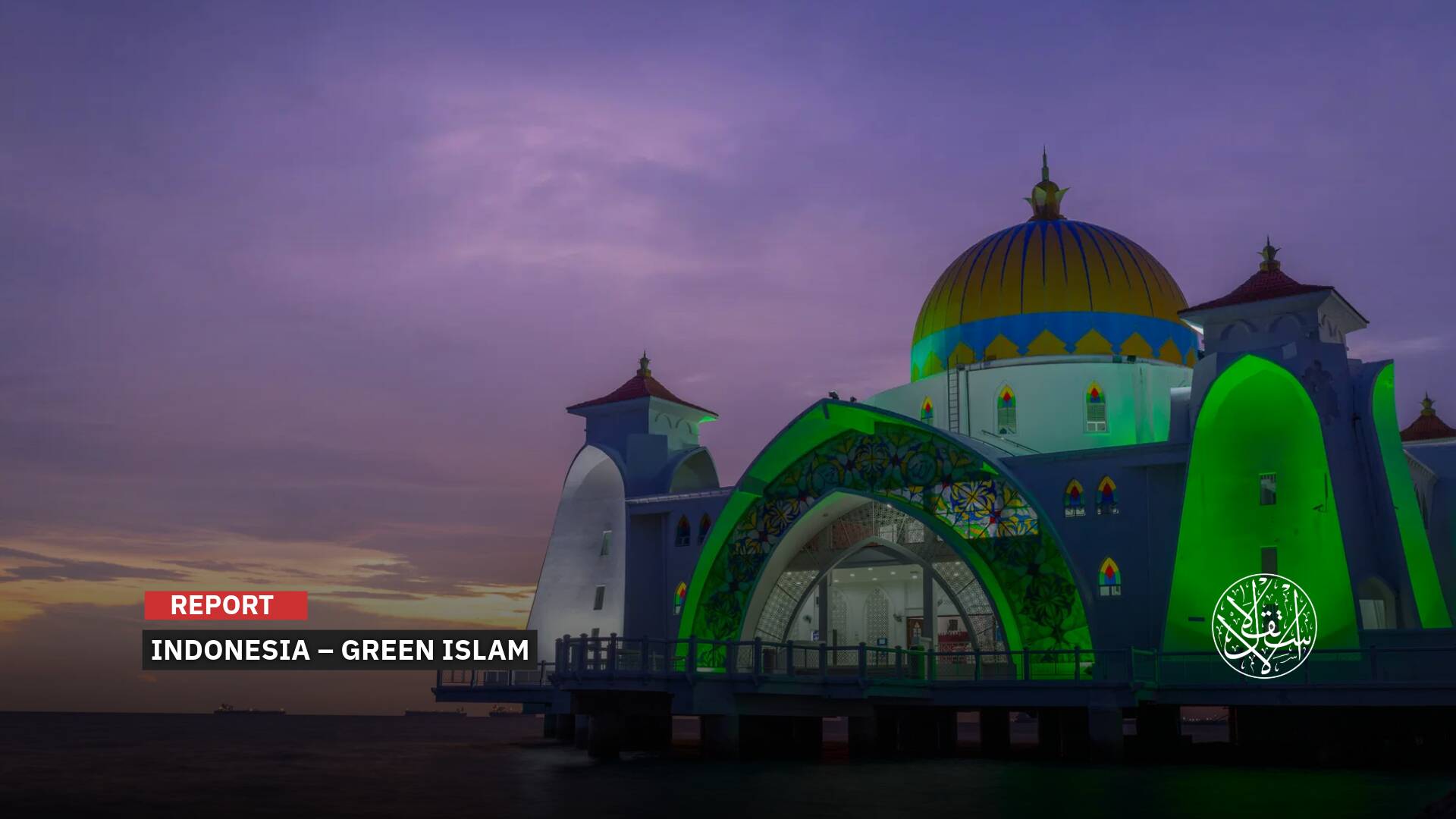Zaha Hadid; The Iraqi Engineer Who Designed Top World Monuments

Five years had passed away since the death of the Iraqi architect Zaha Hadid,but her designs, which are fluid, strange, and sometimes full of imagination, are still adopted by the countries of the world, and one of the last things done after her death is Beijing airport with the shape of a starfish in 2019. The Iraqi engineer, who passed away in the American city of Miami, March 31, 2016, was associated with the most beautiful and attractive architectural edifices in the modern era, and revolutionized the art of architecture and excelled in making curved masterpieces of art in the world.
https://www.youtube.com/watch?v=-aWJ5p3X-Yo
The Queen of Curves
Hadid's geometric designs are characterized by boldness, with a sense of fragmentation, instability and movement, and this deconstructive method led her to be classified among the leading architects of deconstructive architecture, which is considered one of the architectural forms that appeared in the twentieth century in America and Europe thanks to the use of design programs developed from the programs of the aircraft industry.
The deconstructive structure in engineering opposes the traditional logical structure, and she follows non-straight lines with multiple perspectives in her designs, to produce in the end a design based on distortion or disassembly of architectural lines, which goes hand in hand with philosophical and artistic deconstruction of the French thinker Jacques Derrida.

Deconstructive engineering represents a revolution on the Euclidean engineering heritage and classical ideas, and it is headed towards revolution against the past. The New York Times described it as "the queen of curves, which liberated architecture and gave it a completely expressive new identity."
According to architectural critic and theorist Andres Ruby, "Zaha Hadid's projects are like spaceships, which swim without the influence of gravity in a vast space, with neither a high nor a low part, nor a face or back."
He added, "They are buildings that appear to be in a smooth movement in the surrounding space, and from the initial concept stage of Zaha's projects to the implementation stage, the spaceship approaches the surface of the Earth, and in its stability it is considered the largest maneuver in the field of architecture."
Accordingly, it is very difficult to imitate any of Hadid's architectural work, as each building is a unique case. Hadid does not derive her ideas from any previous architect. Rather, she creates and innovates work, even though she follows in her philosophy, as a whole, a certain architectural doctrine, which is "deconstructive architecture".
Iron Woman
She was famous in Western architecture, she started her architectural activity in the office of Reem Colas and Elia Zingles, then she established her own office in 1978, and in 1994 she was appointed as a professor in the design department at Harvard University and a professor at the University of Chicago in America.
She also worked as a teaching assistant at the College of Architecture in London in 1987, and she was a visiting professor at several universities in Europe and America, including Harvard, Chicago, Hamburg, Ohio, Columbia, New York and Yale. Honorary member of the American Academy of Arts and Literature and the American Institute of Architecture. In 1998, she achieved great success when her design was chosen for the "Rosenthal" Center for Contemporary Art. This was her first project in the United States, and her design won two awards: the Royal Institute of British Architects Award in 2004, and the American Architect Award from the Chicago Architectural Museum in 2005.
Among the most prominent designs were the fire extinguishing station in Germany in 1993, the building of the Italian Art Museum in Rome in 2009 and the American in Cinciatti, the London Marine Sports Center, which was designated for the 2012 Olympic Games, the tunnel station in Strasbourg, and the Cultural Center in Azerbaijan.
In addition to the Scientific Center in Wellsburg, the ship terminal in Salino, the skiing center in Innsbruck, and the Heydar Aliyev Cultural Center in Baku in 2013, which are among the most prominent projects that have brought Hadid to the international phase.
She also succeeded in designing a center for the Olympic Games in London in 2012, and was supposed to oversee the construction of the Olympic stadium in Tokyo in 2020, which it designed with a capacity of 80,000 seats, but it was not approved due to its exorbitant cost, which was more than one billion dollars. Zaha’s work was not limited to the West, but she also worked in the Arab world as she designed the Dubai Opera House and Abu Dhabi Bridge in the UAE.
As for Iraq, Zaha Hadid's projects couldn’t be realized while she was alive, the work is still in the Central Bank of Iraq in the Jadriya in the center of the capital, Baghdad, and it is her first project in her mother country.
In the biography of Zaha Hadid, there are about 950 projects of her design in 44 countries in the world, including Morocco. She was one of the most inspiring stories in the world, as she ranked 69th for the most powerful women in the world in 2008, according to Forbes magazine.
Awards and Titles
She was the first Arab woman to receive the "Pritzker Prize" in 2004, and thus she was the first and the youngest woman to receive that award, which is considered equivalent in value to the Nobel Prize in Science and Arts 25 years ago.
From 2000, Zaha Hadid used to receive an award every year, until she won 12 awards in one year, in addition to many prestigious international awards, and she also received the Medal of Appreciation from the British Queen and was chosen as the fourth most powerful woman in the world in 2010, according to the magazine classification The Times. She also won the 2014 London Design Museum Prize for her design of the Heydar Aliyev Center in Baku, the capital of Azerbaijan, which made her the first woman to win the grand prize in the competition that was inaugurated 7 years ago.
Hadid said about the secret of distinguishing this building, which is one of her achievements that summarizes the experience of 30 years of research: “ Baku, the capital of Azerbaijan, supported this project. The budget was unlimited, and this is important, because when it is not, there will be concessions or a compromise at the expense of the work. "
At the end of her life, Zaha had won over a hundred awards and medals, including the British Medal of Honor as a Lady Commander, the Gold Medal for Architectural Design, the Japanese Imperial Medal, and others. She was also one of the 100 most influential women in Britain, according to the "BBC" in 2013. And ranked 21 most influential Arab women in 2015, according to the "Arabian Business" site.
Daughter of the Minister
Zaha Muhammad Hussain Hadid al-Lahibi, also known as Zaha Hadid, was born in Baghdad on October 31, 1950, and her father, Muhammad Hadid, was one of the leaders of the Iraqi National Democratic Party and was a former Minister of Finance between 1958-1960. Zaha continued to study in Baghdad schools until she finished high school, and about this stage, Zaha said during a TV interview in 2014: "I joined the school of nuns in Baghdad. I was a Muslim girl in the monastery, and there are Jewish girls. We were obliged to go to church and pray in it."
She added that when she returned home, she asked her father, why do not we pray like them, and her father only told her that they are not Christians, and therefore, they do not have to go to church.
Hadid indicated that she received a modern education in Iraq, and she benefited from her parents' enlightened upbringing and unconditional support, and that they were her great inspirations, in addition to their enthusiasm and encouragement that awakened her ambition and gave her great confidence in herself.
At the age of six, her parents took her to a special exposition in Frank Lloyd Wright at the Baghdad Opera House, and at the time she was greatly impressed by the shapes that she saw, and at the age of eleven, Zaha decided to become an architect, so she designed her room's decoration, and she was always watching the architectural designs of the buildings. She studied mathematics at the American University of Beirut and obtained her BA from 1968 to 1971. She became famous in Western architectural circles, where she studied architecture at the Architectural Association in London from 1972 to 1977, where she got a diploma.
Zaha Hadid held several international expositions for her artworks that include architectural designs, drawings and paintings, and began with a large exposition at the Architectural Association in London in 1983.
She also held a number of other large expositions at the Guggenheim Museum in New York in 1978, the "GI Gallery" in Tokyo in 1985 and the Museum of Modern Art in New York in 1988.
She also held the Graduate Department of Design exposition at Harvard University in 1994, and the waiting room at the Grand Central Station in New York in 1995. Her work is part of the permanent expositions at the Museum of Modern Art in New York and the Museum of German Architecture in Frankfurt.
Hadid died on March 31, 2016, at the age of 66, after suffering a heart attack in a hospital in Miami, in the United States, and her office in London announced: “It is with great sadness that Zaha Hadid Architects confirms that Zaha had suddenly passed away in Miami this morning, She was suffering from pneumonia, which she caught at the weekend and had a heart attack while being treated in the hospital."











